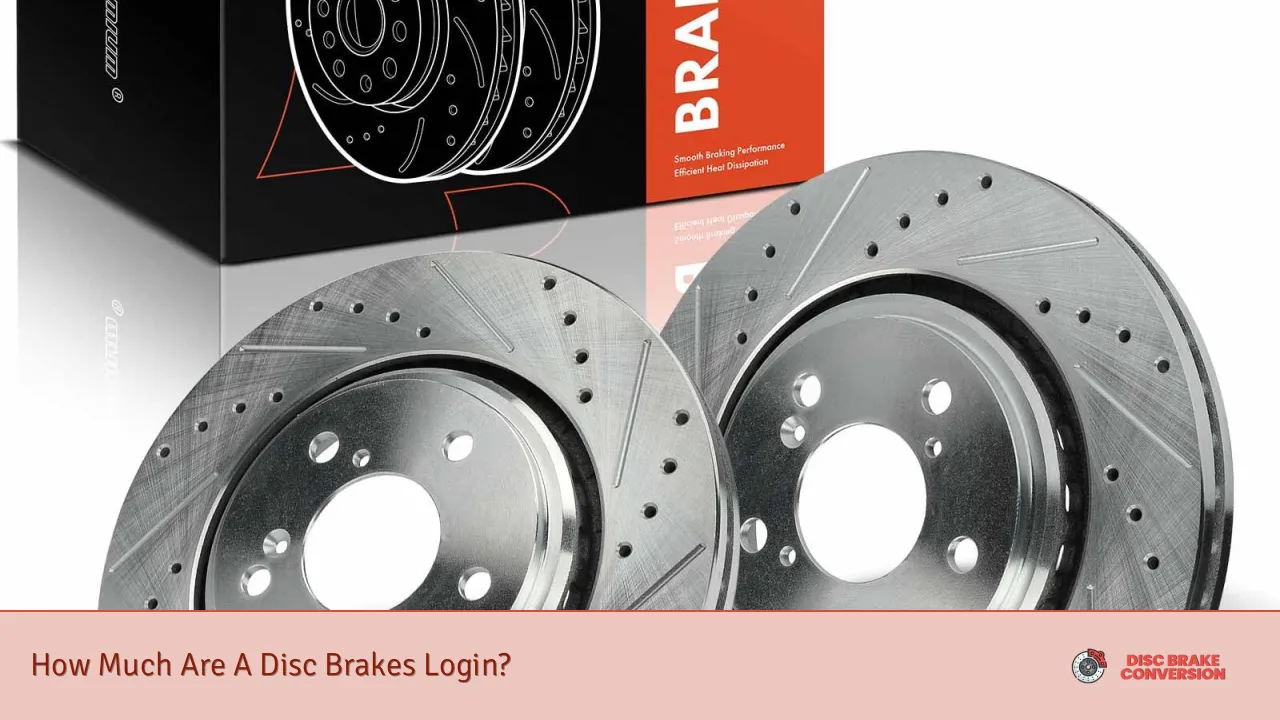Disc brakes are a crucial component of modern vehicles, providing superior stopping power and safety. They operate by using hydraulic force to compress brake pads against a rotating disc, generating friction that slows down or stops the vehicle. Understanding the costs associated with disc brakes is essential for vehicle owners, as it impacts maintenance budgets and overall vehicle performance. This article will explore various aspects of disc brakes, including their types, advantages, maintenance costs, and factors influencing their pricing.
Aspect Details Function Creates friction to slow or stop a vehicle Components Brake pads, calipers, rotors
Understanding Disc Brakes
Disc brakes are widely used in vehicles due to their effectiveness and reliability. They consist of several key components: the rotor, which is a disc attached to the wheel; the caliper, which houses the brake pads and applies pressure; and the brake pads, which create friction against the rotor to slow down the vehicle. The hydraulic system used in disc brakes allows for more consistent braking performance compared to traditional drum brakes.
The advantages of disc brakes include better heat dissipation, reduced brake fade, and improved performance in wet conditions. These features make them particularly suitable for high-performance vehicles and those that require frequent stopping power, such as SUVs and trucks.
Types of Disc Brakes
There are primarily two types of disc brakes: floating and fixed.
- Floating Disc Brakes: These are the most common type, where the caliper moves slightly to allow both pads to contact the rotor evenly. This design helps distribute wear evenly across the brake pads.
- Fixed Disc Brakes: In this design, the caliper is stationary, with pistons on both sides of the rotor that push against the pads. Fixed calipers typically provide better performance but can be more expensive and complex.
Each type has its pros and cons, affecting their pricing and application in different vehicles.
Factors Influencing Disc Brake Prices
The cost of disc brakes can vary significantly based on several factors:
- Material Quality: Higher-quality materials such as carbon-ceramic rotors tend to be more expensive but offer better performance and longevity.
- Brand Reputation: Established brands often charge a premium for their products due to perceived quality and reliability.
- Vehicle Type: The specific requirements for different vehicles can influence pricing. For instance, performance vehicles may require specialized components that are more costly.
- Installation Costs: Labor costs for installation can vary based on location and service provider.
- Aftermarket vs OEM Parts: Original Equipment Manufacturer (OEM) parts are typically more expensive than aftermarket options but may offer better compatibility and warranty support.
Maintenance Costs for Disc Brakes
Regular maintenance is essential for ensuring optimal performance from your disc brakes. The primary maintenance tasks include checking brake pad thickness, inspecting rotors for wear or damage, and replacing brake fluid as needed.
Typically, brake pads need replacement every 30,000 to 70,000 miles depending on driving habits and conditions. Costs for brake pad replacement can range from $100 to $300 per axle depending on vehicle type and whether you choose aftermarket or OEM parts.
Rotors may also need resurfacing or replacement if they become warped or excessively worn. Resurfacing costs around $50 to $150 per rotor, while new rotors can range from $30 to $200 each depending on quality and brand.
Advantages of Disc Brakes
Disc brakes offer several advantages over traditional drum brakes:
- Better Heat Dissipation: The design of disc brakes allows for more efficient heat dissipation during braking, reducing the risk of brake fade.
- Consistent Performance: Disc brakes maintain effective braking performance in various weather conditions, including rain or snow.
- Easier Maintenance: The accessibility of brake components makes inspections and replacements simpler compared to drum brakes.
- Longer Lifespan: Due to their design and materials used, disc brakes often have a longer lifespan than drum brakes.
These benefits contribute to their growing popularity in modern vehicles across all segments.
Common Issues with Disc Brakes
Despite their advantages, disc brakes can experience issues over time:
- Brake Fade: This occurs when excessive heat builds up during prolonged braking, leading to reduced effectiveness. Regular maintenance helps mitigate this risk.
- Warped Rotors: Overheating can cause rotors to warp, resulting in vibrations during braking. This typically requires resurfacing or replacement.
- Worn Brake Pads: Brake pads wear down over time and need regular inspection to ensure safety.
Addressing these issues promptly is crucial for maintaining vehicle safety and performance.
FAQs About Disc Brakes
- What are disc brakes?
Disc brakes use hydraulic force to compress brake pads against a rotating disc to create friction that slows down a vehicle. - How often should I replace my disc brake pads?
Brake pads typically need replacement every 30,000 to 70,000 miles depending on driving conditions. - What causes brake fade?
Brake fade occurs when excessive heat builds up during prolonged braking, leading to reduced braking effectiveness. - Are aftermarket disc brakes reliable?
Aftermarket disc brakes can be reliable but vary in quality; it’s essential to choose reputable brands. - How do I know if my rotors need replacing?
If you experience vibrations while braking or notice uneven wear patterns on your rotors, they may need replacement.
Conclusion
Understanding the costs associated with disc brakes is vital for any vehicle owner. From initial purchase prices influenced by material quality and brand reputation to ongoing maintenance costs like pad replacements and rotor resurfacing, being informed allows you to make better decisions regarding your vehicle’s braking system. Investing in high-quality disc brakes not only enhances safety but also contributes to overall vehicle performance and longevity.

